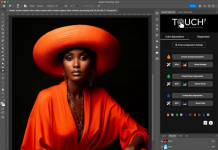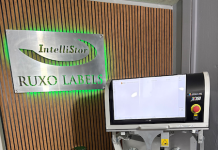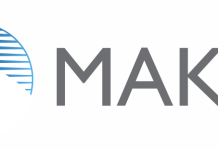According to Federico D’Annunzio, product owner, hybrid & label printing, BOBST, the label printing market is worth hundreds of billions of rands and is expected to grow. This is driven in part by changing market dynamics and ever-evolving demands from label customers, with a growing number of stock keeping unit (SKUs), a dramatic reduction in average job lengths and life-cycles for mass-produced products and a significant increase of the regulatory content that is required on products.
But it is also due – in part at least – to the fact that players in the label printing industry have been willing to embrace change and pioneer new printing and converting methods. The result in recent years has been an increasing number of label types and variety of labels in the industry.
So, is that set to continue? And should we look to the label industry as a weather vane for the packaging industry overall? Here we look at four key trends in the labelling industry and the potential impact these may have.
1. The integration of digital and analogue
The label sector has clearly been an early adopter of digital printing. Digitally-printed labels have boomed in recent years, driven by market demands for shorter runs, more customised packaging, greater sustainability and the need to help products stand out even more.
The rest of the packaging market is following. Indeed, we have recently seen a tipping point in the industry with more new narrow web digital press installations than flexo presses. Beyond labels, analysts expect a strong growth in digital for corrugated, folding carton and flexibles applications.
The capabilities of digital printers and presses are increasing, but such breakthrough innovations can take more time than expected to become mainstream. Digital represents an entirely new way of processing jobs, from the file to the end product, and step-by-step, it will enable companies to reach new frontiers in quality, productivity and overall workflow. In addition, the online ‘digital product’ is growing in importance; sophisticated software is enabling more of the design, approval and marketing process to be completed using the digital product. This will change the working dynamic between converters / printers and brand owners as they will share a more digitised cooperation throughout the workflow.
2. The rise of customisation and premium labels
Analogue printing is well suited for mid-to-long applications and will continue to contribute to a large percentage of global production. Meanwhile, demand is evolving rapidly towards more customisation and promotion, which means smaller runs, greater cost constraints and eventually the transformation of the entire digital workflow. Being able to produce results with maximum flexibility and to an optimum economical value will give digital printing a huge foothold in all sectors.
Brands, large and small, are promoting so-called ‘targeted campaigns’, where the labels alone can enhance the apparent quality of a product. Different print effects – such as hot foil stamping, cold foil stamping and gravure printing – are used to embellish the labels to give them a more ‘premium’ appearance, as are tactile or haptic effects using processes like spot varnishing. Some of these enhancements can even be done digitally.
We will likely see a better fit in the industry between conventional flexo, Extended Colour Gamut (ECG) and digital printing technologies, all used optimally to meet the increasing demand for labels.
3. Demand for better colour control – from file to finished product
Understandably, brand owners have a great demand for colour consistency. They know that their customers subconsciously look to the packaging and the label for cues about quality, so any discrepancy issues with brand colours can lead to a negative perception.
The increasing demand for colour consistency is leading the drive towards the Extended Color Gamut (ECG). ECG printing uses three additional ink colours – orange, green and violet (OGV) – on top of the conventional colours of cyan, magenta, yellow, and black (CMYK), making for a total of seven (CMYKOGV). Printing with a traditional CMYK blend only matches approximately 60% of the Pantone – but when printing with a CMYKOGV blend, it is possible to match 90%+ of the Pantone. Again, in this domain, innovation will be at the forefront to improve ink while increasing the Pantone reach.
What the industry needs to see is repeatability and consistency. Now, the digitisation of colour matching has made 100% colour conformity with the job master request a reality. Brand owners want to achieve colour conformity on a global scale, irrespective of where their printing suppliers are located in the world. Converters have been pleasantly surprised by the outcomes that will enable them to deliver on this request. They also recognise the immediate advantages in flexibility and time-to-market when using the ECG technology in combination with digital automation in flexo presses.
4. Increasing automation and Internet of Things (IoT)
The growing demands on label printers for shorter print runs, faster turnaround, and greater flexibility and customisation is driving the industry towards higher levels of automation across digital and analogue printing methods.
Ultimately, this will likely lead towards integrated workflows optimising time to market and increasingly satisfying consumer demands. Already, systems can link to Cloud applications and monitor machines and productivity.
Higher levels of automation of course have an impact on the type of personnel needed. Human errors are the biggest reason for product recalls; step-by-step, new solutions will significantly reduce this risk. A more important role will be taken by the pre-press specialist and the supply chain people, ensuring there are no bottlenecks, but rather a smooth automated flow.
BOBST provides a wide range of solutions for the labels and flexible packaging industry, from digital presses to digital flexo, traditional UV flexo and multi-process printing units. All the solutions deliver best value for quality and combine digitalisation, automation and connectivity innovations.
By connecting all the systems that relate to production, IoT solutions allow users to monitor the performance of equipment along the value chain. BOBST solutions also mean a truly global service and comprehensive technical support, which is becoming more and more connected, fully equipped with online controls, with web portal access and round the clock service support.
So, as label printing continues to grow, BOBST will increase its position, supplying innovative solutions to satisfy the most demanding brand owners and converters.
BOBST www.bobst.com





















